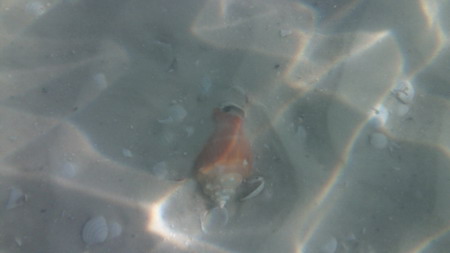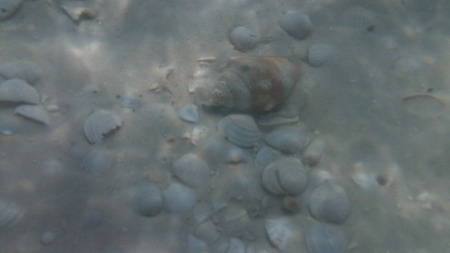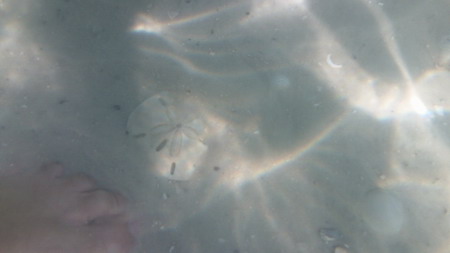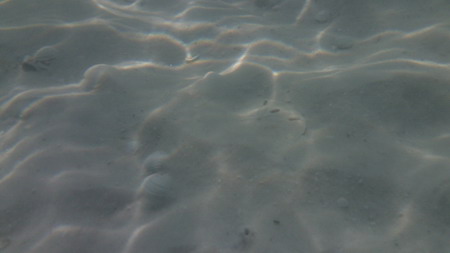|
Beach at Panama City, Florida Second Page for Beach Photos and Events
Click HERE or BEACH on the menu for the First Page
|
|
|
This starts with a few underwater shots to see how the shells look on a clear day. Some of the colors do not show well in reflective water, and the wave patterns distort the light. Then waves, shifting and swirling sand, and sea foam block the view. Plus the water temp is rather cool for these shots on January 13th, so deep water is seasonal.
Two cockle shells of good size, are easy to spot with color and shape distortion in the sand. If I find a live critter, I always leave it there or throw it back in deeper water.
Two Conch shells are on top here, but often only partially exposed. The color is much the same as a crab, so caution is needed if unsure of the prize. A crab sliced an inch line on the palm of my hand last year, with only one snap. They normally run, but when you grab them, they get defensive.
More difficult to see are two Sand Dollars. My toes are on the left for perspective. The Dollars are brown or black when alive, with a fuzzy coating. The fuzz is thousands of hairs or legs that move in unison like those on a starfish.
The best days for shell hunting are after a big storm. The shells will only be on the beach about a week before they are totally picked over by collectors. The waves and water may not calm and turn clear for many days, but low tide and high pressure is a best time for water hunting.
Lowest Tides are usually on or before the lunar quarters, or sometimes if there is a large storm far away, like South Texas or South of Cuba. The tides rise and fall twice a day, and the official Tide Charts are the best way to identify the tide time of day. When the wind is calm, the High barometric pressure of a sunny clear day will lower a normal tide and make a great day.
Click the Orange Link below, to get the current tide chart for the week. Tides at Panama City Florida - Government Tide Charts http://water.weather.gov/ahps2/hydrograph.php?wfo=tae&gage=pacf1/
|
|
Click HERE or BEACH on the menu for the First Page
|
Home Author Bible-Study Mysteries WebLinks
Family Physics Politics Electronics Radio Baseball
Writers Email-Author Music Spitfire Beach
|
Referring Theorybin site to friends
is a compliment to this work!





